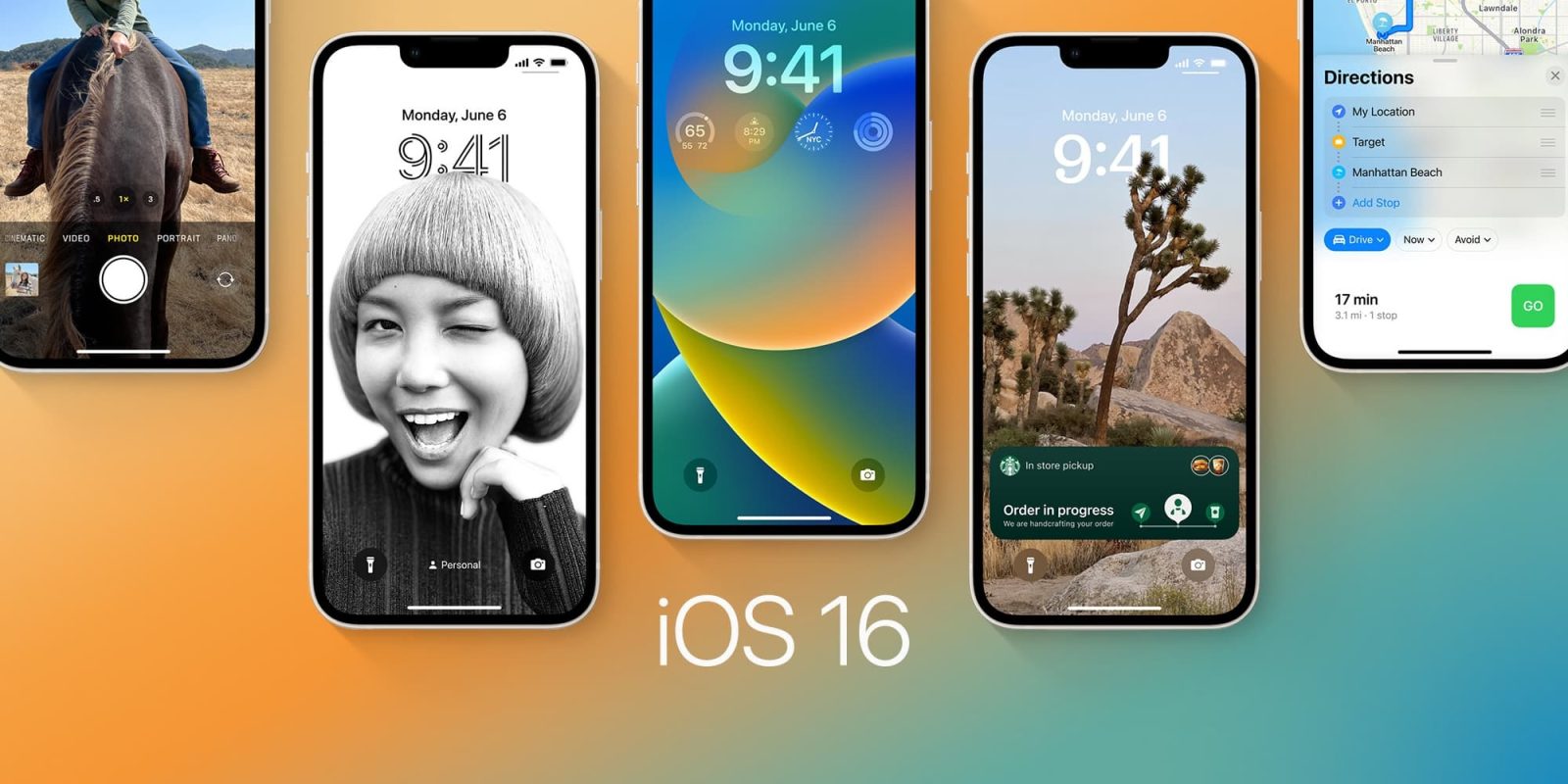
iOS 16 was announced yesterday at WWDC 2022, with one of the biggest changes being a completely redesigned Lock Screen. You can now customize your iPhone’s Lock Screen with different widgets, fonts, dynamic wallpapers, and more.
All of these features come as rumors indicate the iPhone 14 Pro could include a new always-on display. Now, 9to5Mac has found multiple references within iOS 16 indicating that an always-on display is something in development.
iOS 16 always-on display
Bloomberg’s Mark Gurman was first to report on the revamped Lock Screen that would be added as part of iOS 16. Gurman also noted that iOS 16 would build in support for an always-on display in preparation for the feature potentially launching with the iPhone 14 Pro and iPhone 14 Pro Max this fall.
Now that the first developer beta is available, 9to5Mac has discovered multiple references that confirm iOS 16 does indeed include support for an always-on display. Within iOS 16, there are three new frameworks that have been added that relate to backlight management of the iPhone’s display. Backlight management is a key aspect of enabling an always-on feature.
Each of these frameworks includes references to an always-on display capability. Theoretically, you could speculate that these always-on features were added in reference to the existing always-on display features of the Apple Watch, but that’s not the case here.
All of the frameworks discovered by 9to5Mac are used by different components of iOS, including the Lock Screen. Additionally, and most notably, there are multiple references to an always-on display within the Springboard — which is what manages the Lock Screen (and home screen) of iPhone. Apple Watch does not use Springboard.
Finally, there are also hidden flags within iOS 16 that Apple engineers can use to enable the always-on capability, even on unsupported devices. This means Apple engineers can test the always-on display feature on the iPhone 13 Pro, ahead of the feature launching with the iPhone 14 Pro and iPhone 14 Pro Max later this year.
9to5Mac’s Take
And if you’re wondering why the always-on display feature will be limited to the iPhone 14 Pro lineup, even if Apple is testing the feature on the iPhone 13 Pro, it comes down to the variable refresh rate technology of the ProMotion display.
The iPhone 13 Pro variable refresh display can scale from 120Hz to 10Hz. For context, the Apple Watch’s always-on display can scale to a 1Hz refresh rate. This allows the always-on display to be an option while also not destroying the Apple Watch’s battery life. While not confirmed, it’s possible the iPhone 14 Pro is able to run at 1Hz to preserve battery life while offering an always-on display.
Ultimately, it’s clear that iOS 16 is laying the groundwork for an always-on display feature in many ways. The new widget and notification designs on the Lock Screen are perfect for an always-on display, and the underlying iOS 16 code confirms that such a feature is in development.
FTC: We use income earning auto affiliate links. More.





Comments